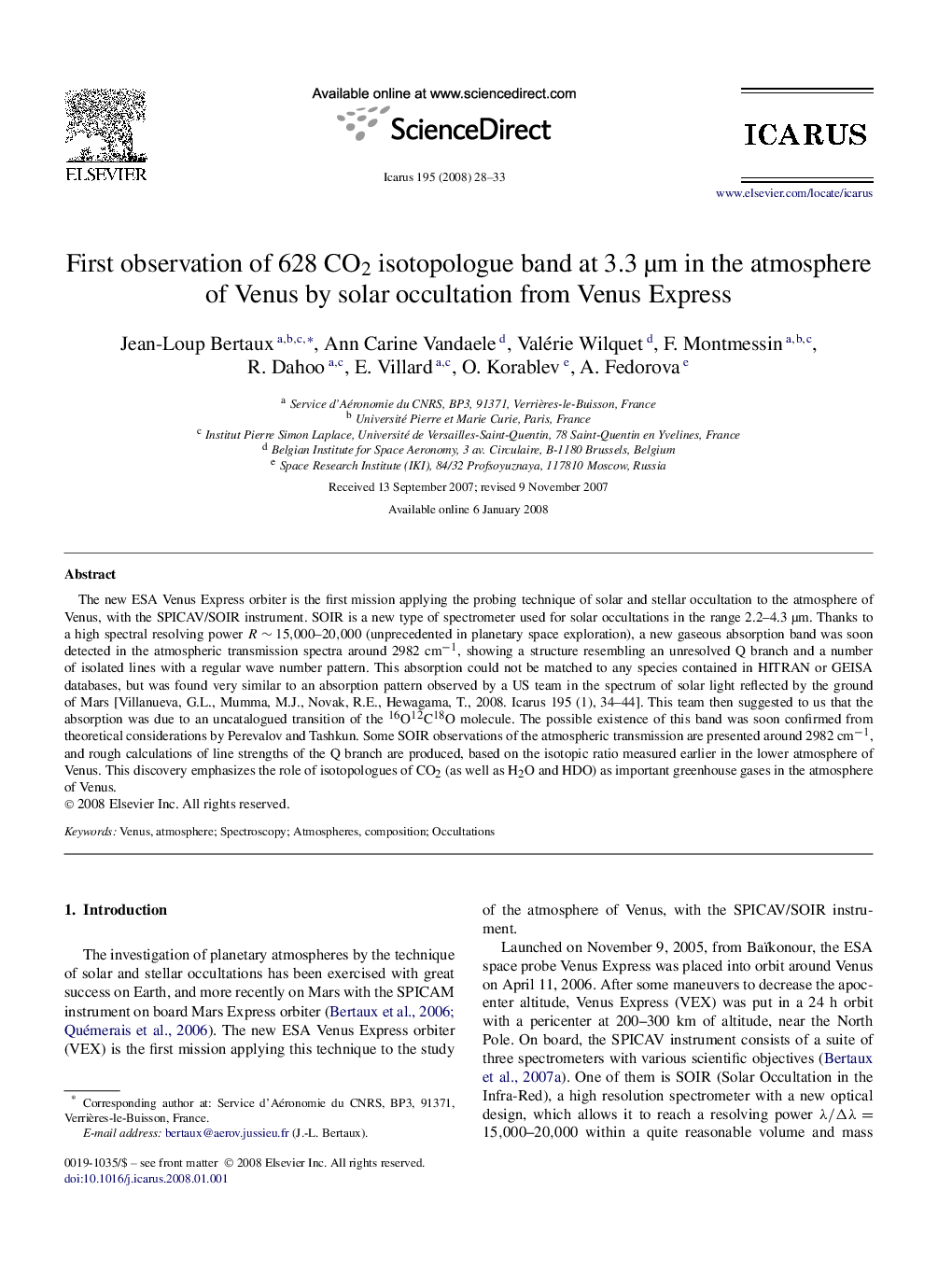| Article ID | Journal | Published Year | Pages | File Type |
|---|---|---|---|---|
| 1775061 | Icarus | 2008 | 6 Pages |
The new ESA Venus Express orbiter is the first mission applying the probing technique of solar and stellar occultation to the atmosphere of Venus, with the SPICAV/SOIR instrument. SOIR is a new type of spectrometer used for solar occultations in the range 2.2–4.3 μm. Thanks to a high spectral resolving power R∼15,000–20,000R∼15,000–20,000 (unprecedented in planetary space exploration), a new gaseous absorption band was soon detected in the atmospheric transmission spectra around 2982 cm−1, showing a structure resembling an unresolved Q branch and a number of isolated lines with a regular wave number pattern. This absorption could not be matched to any species contained in HITRAN or GEISA databases, but was found very similar to an absorption pattern observed by a US team in the spectrum of solar light reflected by the ground of Mars [Villanueva, G.L., Mumma, M.J., Novak, R.E., Hewagama, T., 2008. Icarus 195 (1), 34–44]. This team then suggested to us that the absorption was due to an uncatalogued transition of the 16O12C18O molecule. The possible existence of this band was soon confirmed from theoretical considerations by Perevalov and Tashkun. Some SOIR observations of the atmospheric transmission are presented around 2982 cm−1, and rough calculations of line strengths of the Q branch are produced, based on the isotopic ratio measured earlier in the lower atmosphere of Venus. This discovery emphasizes the role of isotopologues of CO2 (as well as H2O and HDO) as important greenhouse gases in the atmosphere of Venus.
